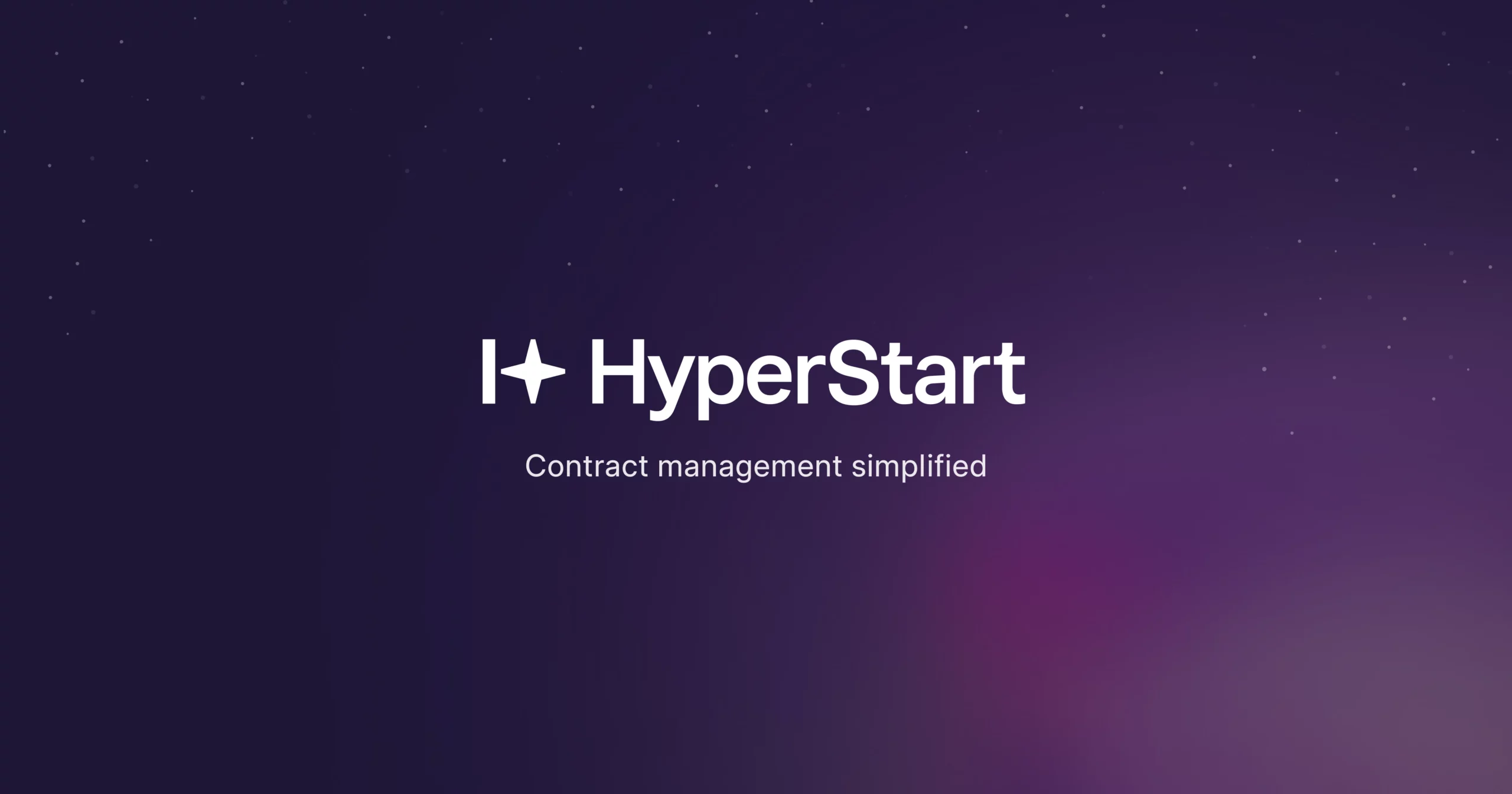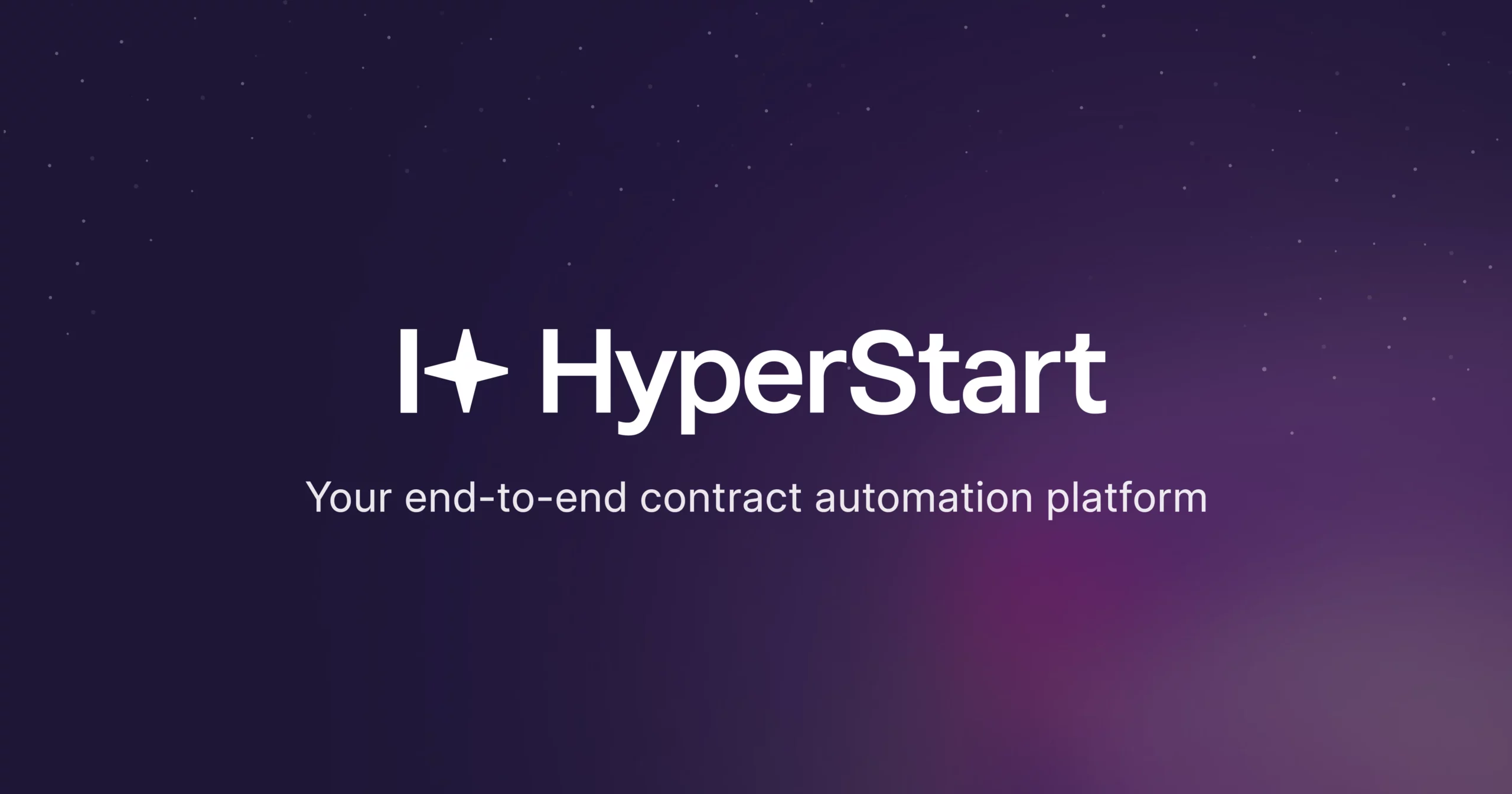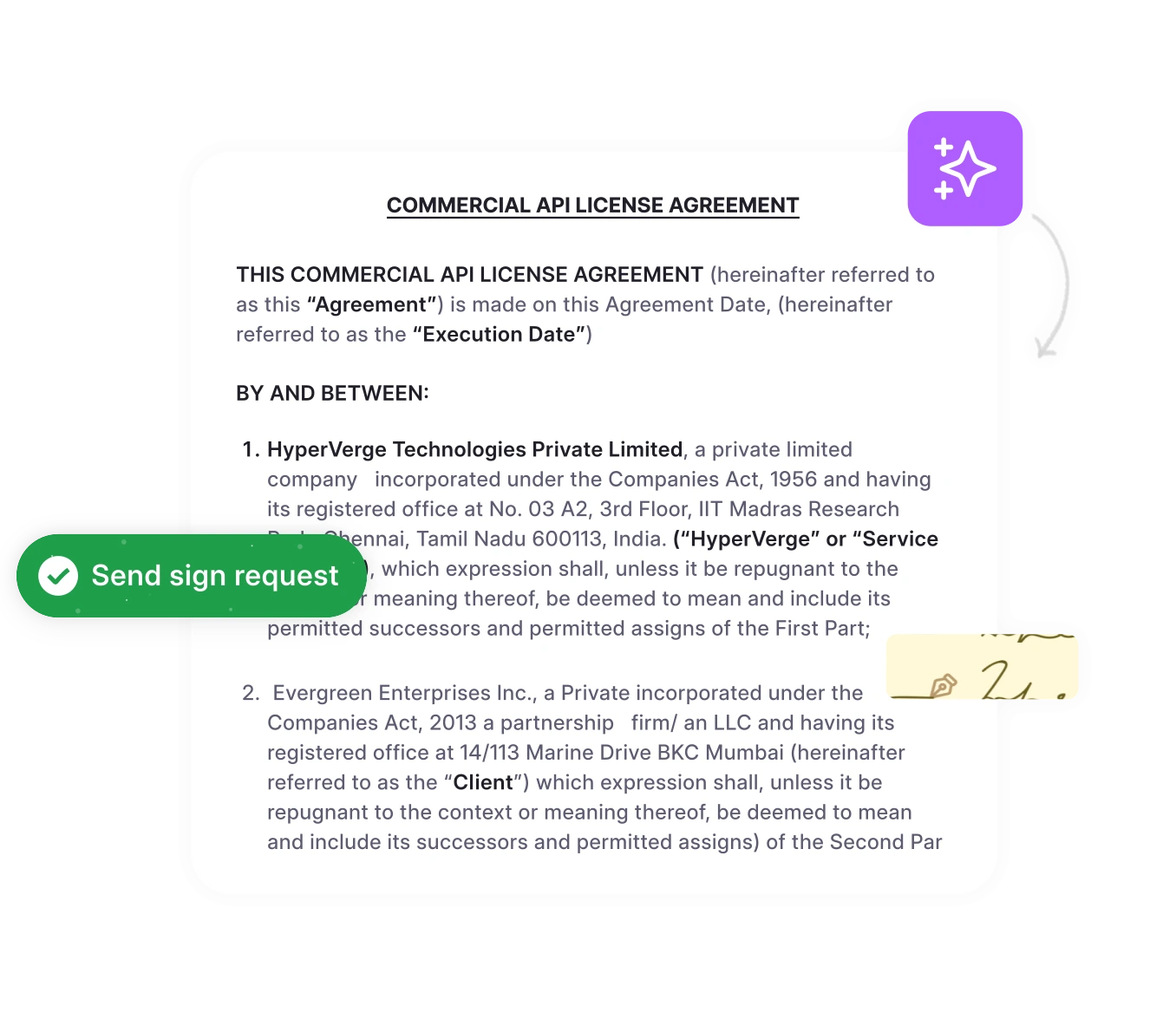Contracts are essential to every business, but managing them shouldn’t be a guessing game. Yet, too often, agreements end up lost in email chains or buried in filing cabinets, leading to slow decisions, hidden risks, and wasted time.
That’s where contract digitization comes in. By turning contracts into organized, searchable digital files, companies can take control of their entire contract management process. It makes finding contracts quick and easy, helps teams stay on top of renewals and commitments, and reduces the chance of costly mistakes.
With business evolving faster than ever, having a straightforward, streamlined process to manage contracts isn’t just helpful, it’s essential. Digitizing your contracts means less guesswork and more confidence that nothing important slips through the cracks.
In this guide, you’ll find out how contract digitization works, why it matters now more than ever, key challenges, and ways to overcome them effortlessly.
What is contract digitization?
Contract digitization is the process of converting physical or static digital contracts (like PDFs) into searchable, structured digital formats using OCR, AI, and contract lifecycle tools. This enables faster access, automation, and tracking of compliance.
It involves utilizing digital tools and software to manage the comprehensive contract lifecycle, from creation and negotiation to execution and contract renewal. The primary objective is to streamline contract processes, enhance efficiency, and foster collaboration.
Here’s what real contract digitization involves:
- Turning paper, PDF, or image-based contracts into machine-readable data using advanced OCR and AI-powered contract data extraction.
- Creating a single, central repository where contracts are standardized, easy to find, and ready for analysis or audit at any time.
- Capturing and indexing contract terms, commercial terms, obligations, expiration dates, and metadata for every contract type—whether it’s a sales agreement, vendor contract, NDA, or employment agreement.
Digitizing vs. digital-native contracts
Digitizing contracts refers to the digital transformation of your existing contracts, often signed on paper or as static PDFs, into structured digital records. Digital-native contracts, in contrast, are created and managed entirely in a digital contract management platform, with workflows, approvals, and e-signatures baked in from the start.
Take the tedium out of renewal tracking
Missing deadlines or obligations? Contract digitization gives you auto-reminders, clause visibility, and full audit trails.
Book a DemoNow that we understand contract digitization, let’s have a look at the step-by-step process that organizations follow to digitize their contracts.
How does contract digitization work? (step-by-step contract digitization process)
Contract digitization is not limited to scanning and uploading. Here is a detailed look at the contract digitization process used by leading organizations:
1. Scanning and converting physical documents
High-volume scanning: Physical contracts are scanned using high-resolution scanners capable of handling thousands of pages per day. In highly regulated industries, chain-of-custody procedures may apply.
OCR (Optical Character Recognition): The scanned images are processed using advanced OCR to convert text images into machine-readable data.
Intelligent contract classification: AI platforms, including HyperStart’s CLM, can automatically classify contracts by type, parties, dates with filters and contract families. This process helps sort decades-old agreements quickly.
2. Data extraction and structuring
Metadata extraction: Modern AI/ML solutions extract contract data fields such as effective date, renewal period, contract value, jurisdiction, governing law, commercial terms, and more. This goes far beyond what traditional OCR alone can handle.
Clause and risk analysis: The best contract digitization platforms use NLP (natural language processing) to identify standard and non-standard classes, flagging risks or deviations from approved templates. For example, auto-detecting a missing indemnification clause in a supply chain contract.
Mapping to business processes: Structured data can now link to key business workflows, renewal alerts, procurement approvals, legal review, or sales deal reporting.
3. Secure storage in digital repositories/cloud
Central repository: All digitized contracts are stored in a secure, cloud-based contract repository with role-based access for authorized users. This supports version control, full audit trail, and centralized search across contract types.
Access controls: Multi-factor authentication and granular permissions prevent unauthorized access or accidental changes, crucial for legal departments and procurement teams handling sensitive deals.
Backup and retention policies: Enterprise contract management systems automate retention schedules, ensuring regulatory requirements for document storage are met.
4. Integration with contract management systems (CLM)
Seamless sync: Digitized contracts and their structured data feed directly into your digital contract management system, where you can launch automated workflows, run analytics, and trigger notifications.
API integrations: Advanced CLMs like HyperStart offer out-of-the-box integrations with CRM, ERP, and procurement platforms, so contract data flows where it’s needed most.
End-to-end lifecycle management: From contract generation and contract negotiation to e-signature, renewals, and reporting, everything runs from a single digital platform.
Understanding the step-by-step process of contract digitization highlights how digital tools transform contract management. Now, let’s examine the key benefits organizations gain by adopting this approach.
On how digitized contract management, powered by AI, transforms agreements from static documents into strategic assets, reducing delays and enhancing accuracy.
“Embracing generative AI in contract management propels organizations towards enhanced efficiency and valuable strategic insights . By optimizing processes and leveraging advanced AI for data extraction and analysis , businesses can convert vast amounts of contract data into structured insights, ensuring greater precision and quicker turnaround times.”
Without adopting these digital advancements, companies risk being burdened by legacy processes, hindering their ability to manage complex agreements efficiently and capitalize on strategic opportunities in a fast-evolving digital landscape.
What are the top benefits of digitizing contracts?
Switching from paper contracts to digital ones can make a big difference in how businesses handle agreements. Here are the top 5 benefits of digitizing contracts:
1. Enable faster access and retrieval
Searching for a key agreement or clause shouldn’t feel like a dreadful task. With contract digitization, you can have every document and detail within instant reach, whether you need to respond to an auditor, answer a vendor inquiry, or review a sales deal. Having everything in a secure, central repository saves you time spent on digging through email chains, resulting in reduced risk of missing deadlines.
2. Ensure improved accuracy and regulatory compliance
Manual contract tracking leaves too much room for missed renewal dates, overlooked obligations, or outdated language. By digitizing contracts, organizations can extract key data fields, automate reminders, and set up compliance checkpoints that adapt to changing regulations. This means audit trails are always up to date, and demonstrating compliance during a regulatory review becomes far less stressful for everyone involved.
3. Strengthen contract security and access control
Sensitive commercial contract terms, supplier agreements, and employment contracts demand security. Digitized contracts are stored with role-based access, multi-factor authentication, and encrypted backups, giving IT and compliance teams confidence that only the right people can view or edit sensitive data. Every edit, approval, or download is tracked automatically, supporting robust governance and transparency.
4. Achieve significant cost and time savings
Chasing down signatures, fixing errors, and preparing for audits take up too much time. Automated workflows, electronic signatures, and instant document retrieval lead to less time spent on low-value admin and more on negotiation, risk analysis, or relationship-building. Organizations switching to contract digitization see contract cycles shortened by half, with comparable reductions in contract administration costs.
5. Unlock data-driven contract insights
Digitized contract data unlocks a new level of visibility. With analytics platforms, organizations can track contract performance metrics, spot patterns of risk, and benchmark terms across suppliers, clients, and jurisdictions. This supports smarter negotiations, proactive risk management, and sharper forecasting, turning contracts from static paperwork into a resource that drives real business value.
Don’t let contracts disappear in email threads
Centralize your contracting process , digitize the process, streamline access, and reduce back-and-forth.
Book a DemoWith a clear understanding of the benefits, the next step is to identify the most effective tools for digitizing contracts.
What are the best contract digitization software and tools?
There are a handful of contract digitization tools available in the market, but not all will make it to your list. Here are some of the best tools used by professionals, and the ones you must consider for your own organization:
AI-powered contract analysis platforms
What sets the best apart: Look for platforms with true NLP, trained on millions of contract types, not just basic OCR. HyperStart, Ironclad, and SirionLabs are strong in AI clause extraction and risk flagging.
Contract language analysis: Advanced tools compare new contracts to your approved clause library, flagging risky deviations or unusual commercial terms.
Cloud-based contract repositories
Centralized access: Store all vendor contracts, sales agreements, and internal policies in a single, secure digital repository.
Advanced search and federated data: Search across multiple systems, filter by metadata fields, or pull up full audit trails instantly.
Digital signature and e-signature solutions
Top players: DocuSign, Adobe Sign, and HyperStart’s native e-signature features streamline digital contract execution, with audit-friendly logs and regulatory compliance (ESIGN Act, eIDAS).
Integration with contract management: E-signature platforms should connect directly to your digital contract management system for seamless contract lifecycle automation.
Contract analytics and reporting tools
KPI dashboards: Visualize contract value, renewal pipeline, compliance status, and risk scoring.
Automated alerts: Set up smart reminders for renewals, expiring obligations, or audit deadlines, so nothing falls through the cracks.
A wide range of contracting tools has emerged on the market over the past decade.
While it’s not generally advisable for organizations to leverage every new technology release, it’s essential to understand the gaps in your contract technology stack and how new technology, when deployed correctly, can improve contracting operations with increased efficiency and transparency.
After reviewing the top software options, it’s important to consider the potential challenges in contract digitization and how to manage them effectively.
What are the key challenges in contract digitization? (and how to overcome them)
Digitizing contracts can make business processes faster and more organized, but it also brings its own set of challenges that organizations need to address for successful adoption. Here are the 4 key challenges in contract digitization and ways to overcome them:
Legacy paper contracts and data quality issues
A lot of businesses still manage a mountain of legacy contracts in paper form, scattered PDFs, or buried email attachments. These documents often lack structure, contain outdated information, and are tricky to search or organize. Even when you run OCR to extract text, inconsistent formats make it tough to digitize at scale.
How to tackle it:
Start with standardization. Build consistent templates and a clause library for your key contract types. Tag every contract with essential metadata—like type, parties, dates, and value. AI-powered platforms can auto-classify and enrich old documents, but you’ll get the best results if you clean up data and formats from the start. Standardization comes in handy, when you need accurate analytics or a fast compliance check.
Resistance to change/adoption
Switching to digital contract workflows can meet pushback, especially from teams who are comfortable with Word docs and email threads. If the new system feels complicated or disruptive, adoption stalls and value goes unrealized.
How to tackle it:
Invest in user training from day one. Offer bite-sized sessions tailored to each team’s real work: drafting, approvals, renewals. Run small pilots, gather feedback, and let early adopters champion the new tools. Pick contract management platforms that are intuitive, with clear in-app guidance, so nobody feels left behind. The easier you make it, the quicker everyone comes on board.
Security & compliance concerns
Moving sensitive contracts into digital systems can raise alarms about access control, data breaches, or staying compliant with regulations like GDPR, HIPAA, or SOX. Without strong governance, new risks can creep in.
How to tackle it:
Define clear rules for who can view, edit, or approve each contract. Use platforms with robust role-based access, encryption, and digital signature support. Look for full audit trails and regular compliance certifications. When you control access and track every action, your digitized contracts are safer, and your compliance posture is much stronger.
When customers know their data is safe with your business, they are more likely to remain loyal and recommend your services. Moreover, compliance reduces the risk of costly data breaches and legal disputes, saving your business time and money in the long run.
Integration with existing tools
Most organizations rely on multiple business systems, CRMs, ERPs, e-signature tools, and cloud storage. If your digitization platform doesn’t connect easily, contracts end up managed in silos, with double entry and lost productivity.
How to tackle it:
Pick a contract digitization solution that plays nicely with your existing tech stack. Automate routine workflows like approval routing, signature collection, and deadline reminders. When systems talk to each other, teams avoid manual rework and contracts flow smoothly from start to finish.
Turn scattered documents into real workflows
Stop losing time to manual tracking and outdated versions. Digitize contracts for better control with HyperStart to make it easy and efficient.
Book a DemoStart your contract digitization journey with Hyperstart
Contract digitization isn’t just a digital upgrade; it’s an essential aspect for organizations that want to move faster, stay compliant, and keep costs under control. HyperStart streamlines the process with AI-powered contract data extraction, smart bulk import, and deep integration with your existing business systems.
The result? Organizations have cut up to 80% of their admin time and reduced contract turnaround times by as much as 90%, while keeping sensitive data secure and audit-ready.
HyperStart stands out with full audit trails, robust role-based access, and enterprise-grade security that meets ISO 27001:2013 and SOC 2 standards. With proven results across industries, HyperStart helps teams modernize contracts without the hassle, delivering real, measurable improvements in efficiency and risk reduction.










